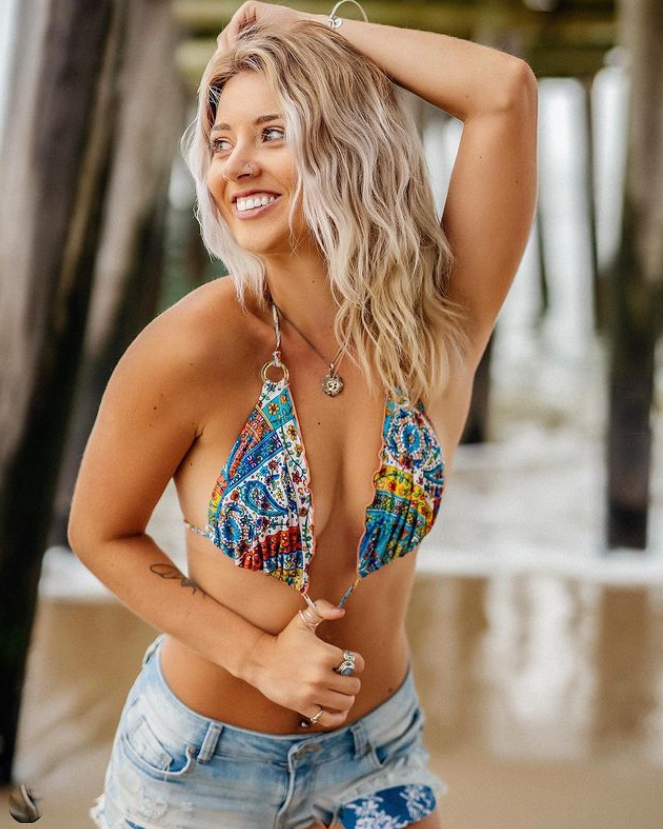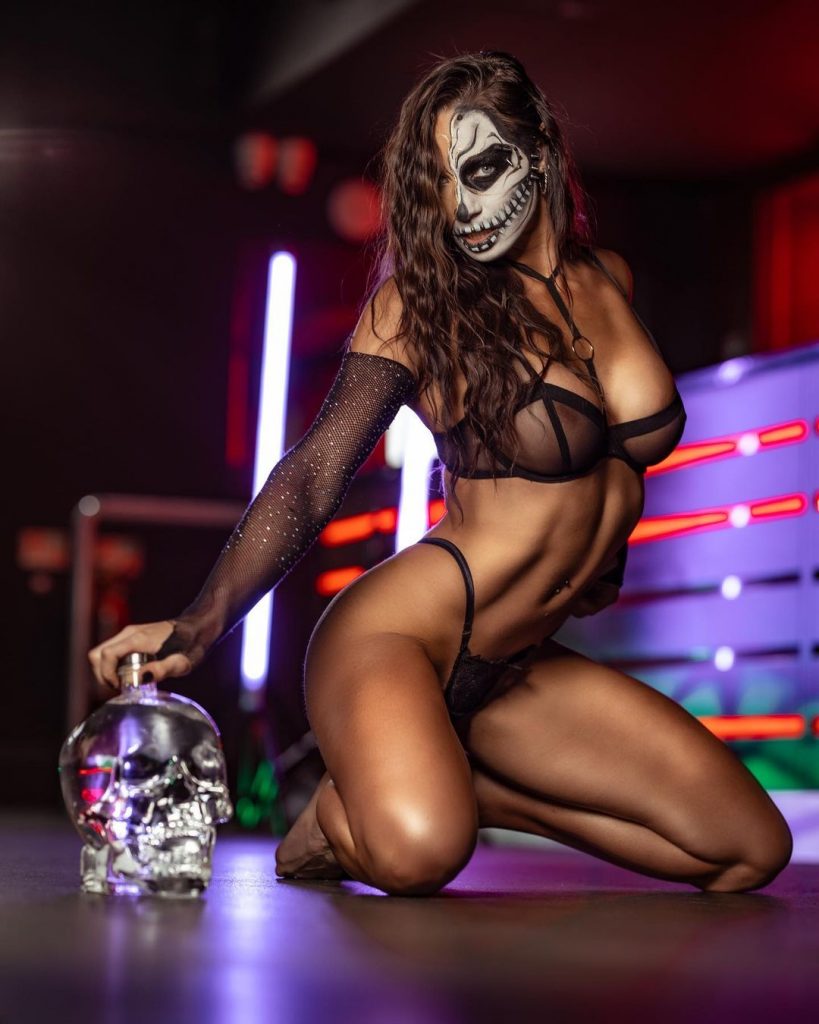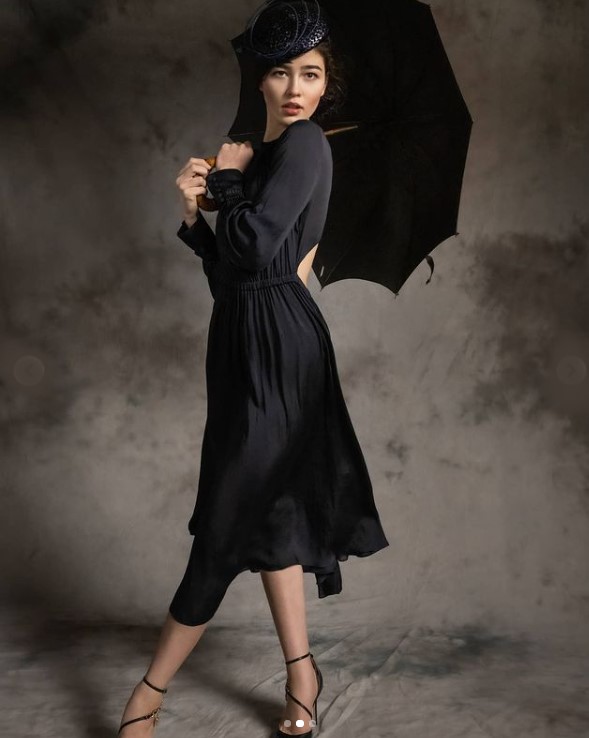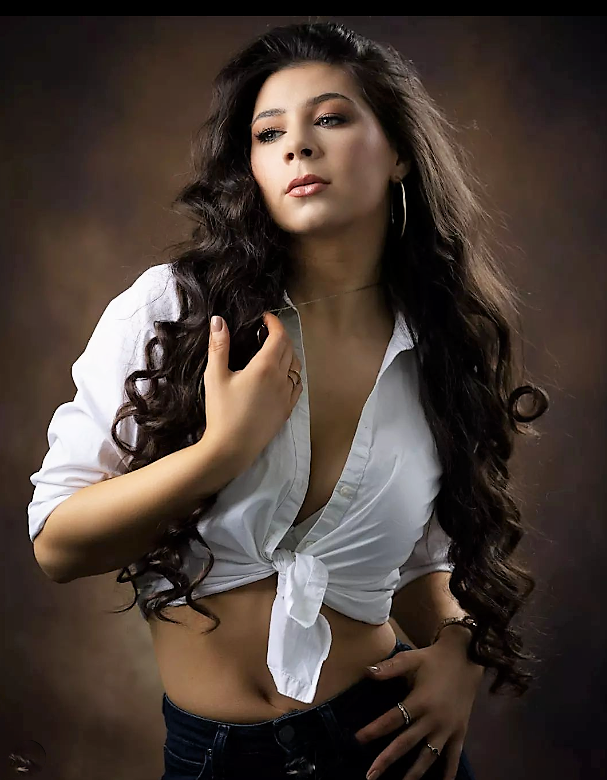The Art of Capturing Beauty: Photographing Female Models with Flair
Hey there, fellow shutterbugs! I’m Alex, and today, I’m gonna spill the beans on how to photograph female models like a pro. No fancy jargon here – just real, practical tips with a sprinkle of personal anecdotes to keep it real. So, grab your camera, and let’s dive in!
Setting the Stage
First things first, let’s talk about the environment. Your choice of location can significantly impact the lighting conditions. Natural light can be your best friend or your worst enemy, depending on the time of day and weather. Early morning and late afternoon are often referred to as the “golden hours” for a reason. The soft, warm, and directional light during these times can add a magical touch to your shots.

USA. See more of Holly Marlin
Building a Connection: It’s All About Vibes
Ever heard the phrase, “Good vibes only”? Well, it applies here. Building a connection with your model is like catching lightning in a bottle. You want her to feel comfortable, and relaxed, and trust your creative vision.
Personal Anecdote: I once had a model, Sarah, who was super shy. To break the ice, we talked about our favorite childhood cartoons. Turns out, we both loved Scooby-Doo. Our shared nostalgia turned the awkwardness into camaraderie, and the shoot was a blast!
Understanding Her Style: Let’s Get on the Same Page
Before you even touch your camera, have a chat with your model. Ask her about her style, what vibe she’s going for, and what she wants to convey in the photos. It’s a two-way street – share your ideas too! Collaboration is the name of the game.
Angle Magic: Find Her Best Side
Angles can make or break a shot. Experiment, experiment, experiment! Shoot from high above to elongate the neck or get down low for a unique perspective. Play around and discover what works best for your model.
Lighting: The Heart and Soul of Photography
Lighting is the MVP in photography. Soft, diffused lighting is your secret sauce. It evens out skin tones and gives that dreamy, ethereal look. Harsh, direct sunlight? Not your friend.
Personal Anecdote: I once tried shooting in the harsh midday sun, and my poor model was squinting like a champ. Lesson learned: Golden hour or softbox lighting is your best bet for that glowing complexion.
Eyes: The Crown Jewels
In portrait photography, the eyes are the star of the show. Make sure they’re in sharp focus. Catchlights – those little reflections in the eyes – add that extra sparkle. It’s like sprinkles on your cupcake!
Composition Counts: Frame It Right
Composition is your superpower. Think about the rule of thirds, leading lines, and framing your model. These techniques can turn a good shot into a stunning one.
Bokehlicious Bokeh: Blurred Background Bliss
Want your model to pop from the background? Use a wide aperture (that’s a low f-number, like f/1.4). This creates a shallow depth of field, blurring out the background and making your model the star.
Reflectors: Bouncing Light Like a Pro
Reflectors are your secret weapons. They bounce light back onto your model’s face, reducing harsh shadows. It’s like having a personal lighting assistant.
Posing Like a Pro: Get Creative
Encourage your model to try different poses. What works for one might not work for another. Be flexible and adapt to her body type and the vibe of the shoot.
Personal Anecdote: I once had a model who was super tall. I had her sit down to make her look more approachable and it worked like a charm!
Candid Moments: Real Magic Unveiled
Candid shots are pure gold. Keep that shutter finger ready for unexpected, beautiful moments. Sometimes, the unplanned shots are the best.

See more of Jody Wright Photography
Dress to Impress: Fashion Matters
Help your model choose outfits that match the vibe of the shoot and make her feel fabulous. Wrinkles or ill-fitting clothes can ruin the whole shebang.
Hair and Makeup: On Point, Always
Hair and makeup can make or break the look. If you’re not working with pros, have a touch-up kit handy. Wind can be your arch-nemesis; a quick hair fix can save the day.
Personal Anecdote: I once shot on a windy beach, and my model’s hair was all over the place. A few bobby pins later, and we had a magazine-worthy shot.
Props and Play: Adding That Extra Flavor
Props can add a whole new dimension to your photos. A flower, a book, or even a funky chair can take your shot from ordinary to extraordinary.
Nature’s Beauty: Outdoor Locations
Outdoor locations offer a smorgasbord of backdrops. Parks, beaches, forests, urban spots – they all bring something unique to the table.
Shadow Play: Embrace the Drama
Don’t be afraid of shadows. They can add depth and intrigue to your photos. Personal Anecdote: I was once shooting in an alleyway, and the interplay of light and shadows created an incredible noir vibe.
Capturing Emotions: It’s All About Feelings
Photography is about capturing emotions. Ask your model to express different feelings, from laughter to contemplation. It’s about capturing her essence.
Post-Processing Finesse: The Cherry on Top
Post-processing is where the magic happens. Enhance colors, adjust exposure, but don’t overdo it. Less is often more in the post-processing world.
Continuous Shooting Mode: Never Miss a Beat
Life moves fast, and sometimes the perfect shot is a split second away. Use continuous shooting mode to capture those fleeting expressions.
Professionalism is Key: Dot Your ‘I’s and Cross Your ‘T’s
Always be professional. Show up on time, be clear about compensation, and maintain your cool. A professional attitude can open doors to future opportunities.
Portfolio Power: Showcase Your Best
A killer portfolio is your ticket to the big leagues. Display your best work online and on social media. A stunning portfolio attracts clients like bees to honey.

See more of Leah Speaks
More on Light
Natural Light vs. Artificial Light
Natural light is wonderful, but it can be unpredictable. Clouds can roll in, and the sun can hide behind buildings. This is where artificial light sources like strobes, continuous lights, or even speedlights come into play. They give you the power to control the lighting situation, creating consistency and reliability. You can shape and manipulate the light to your heart’s content.
Understanding Quality of Light
When working with light, it’s important to understand its quality. Light can be categorized as soft or hard. Soft light is diffused, gentle, and wraps around the subject, creating subtle shadows and flattering textures. Hard light, on the other hand, is direct and unforgiving, creating strong, defined shadows. The choice between these two depends on the mood and style you want to convey in your photos.
Direction is Key
The direction from which your light source comes can make a world of difference. Frontal lighting, where the light is directly in front of the model, provides even illumination but can flatten features. Side lighting creates dimension and depth by casting shadows on one side of the face. Backlighting can add drama and a halo effect, outlining your model.
Using Modifiers
Modifiers are essential tools for shaping and controlling light. Softboxes, umbrellas, reflectors, and diffusers can transform harsh light into something much more flattering. They help spread the light evenly and minimize harsh shadows. Experiment with different modifiers to achieve the desired effect.
Playing with Color
Don’t forget about the color temperature of your light source. Different light sources have varying color temperatures, measured in Kelvin. For example, natural light at sunset is warm, around 3000-3500K, while midday sunlight can be cooler at 5500-6000K. Understanding these color temperatures and how they affect your photos is essential for achieving the right mood and tone.
Practice Makes Perfect
The truth is, mastering lighting in photography is an ongoing journey. It takes time, experimentation, and learning from both successes and failures. Don’t be discouraged if your first attempts don’t turn out as expected. Keep trying, keep adjusting, and keep refining your skills.
Conclusion
In the world of portrait photography, lighting is the magic wand that can transform an ordinary shot into a masterpiece. Whether you’re using natural light or artificial sources, understanding the nuances of lighting is essential. So, get out there, experiment, and keep honing your skills. Remember, the right light can make your model shine like a star. Happy shooting!
Title: Mastering Your SLR Camera: Tips, Tricks, and Long-Tail Keywords
Hey there, fellow photography aficionados! Today, I’m here to spill the beans on how to make the most of your trusty SLR camera. Whether you’re a newbie or just looking to up your game, we’ve got tips, tricks, and some juicy long-tail keywords to help you dive deeper into the world of photography. Let’s get started!
Understanding Your SLR Camera
Before we jump into the nitty-gritty, let’s start with the basics. An SLR camera, short for Single Lens Reflex, is a versatile piece of equipment that offers manual control over various settings. This flexibility is where the magic happens.
Long-Tail Keyword Alert: Mastering your SLR camera settings
Getting Comfortable with Manual Mode
The beauty of an SLR camera lies in its manual mode. It’s where you take control and tell your camera what to do. To harness its power, start with these key settings:
1. Aperture (f-stop): Adjust this to control depth of field. A lower f-stop like f/1.8 creates a blurred background, perfect for portraits.
Long-Tail Keyword Alert: Using aperture settings on your SLR camera
2. Shutter Speed: This determines how long your camera’s sensor is exposed to light. Faster speeds (1/1000) freeze action, while slower ones (1/30) create motion blur.
Long-Tail Keyword Alert: Mastering shutter speed on your SLR camera
3. ISO Sensitivity: It controls your camera’s sensitivity to light. Lower ISO (100-400) for bright conditions, higher ISO (800-3200) for low light or action shots.
Long-Tail Keyword Alert: Understanding ISO settings on your SLR camera
Focus Like a Pro
Getting sharp, in-focus shots is a must. Here’s how:
1. Manual Focus: Use manual focus for precise control, especially in challenging lighting conditions.
Long-Tail Keyword Alert: Mastering manual focus on your SLR camera
2. Autofocus Points: Explore your camera’s AF points – they’re like little focus assistants.
Long-Tail Keyword Alert: Utilizing autofocus points on your SLR camera
3. Depth of Field: Adjust your aperture for the depth of field you desire, ensuring your subject is in focus while the background blurs gracefully.
Long-Tail Keyword Alert: Creating depth of field with your SLR camera
Mastering Composition
Now, let’s talk composition. It’s the secret sauce for visually appealing photos. Try these techniques:
1. Rule of Thirds: Imagine a tic-tac-toe grid on your viewfinder. Place your subject on the intersections for balanced compositions.
Long-Tail Keyword Alert: Using the rule of thirds in SLR photography
2. Leading Lines: Use lines, like roads or fences, to guide the viewer’s eye toward your subject.
Long-Tail Keyword Alert: Incorporating leading lines in your SLR photography
3. Framing: Utilize natural elements or objects to frame your subject, adding depth and interest.
Long-Tail Keyword Alert: Mastering framing techniques in SLR photography
Leverage Natural Light
Natural light can be your best friend. Here’s how to make it work for you:
1. Golden Hour: Shoot during the golden hour (sunrise or sunset) for soft, warm, and flattering light.
Long-Tail Keyword Alert: Capturing golden hour with your SLR camera
2. Diffusers and Reflectors: Use diffusers to soften harsh sunlight and reflectors to bounce light onto your subject.
Long-Tail Keyword Alert: Enhancing natural light with diffusers and reflectors in SLR photography
Post-Processing Magic
After you’ve nailed the shot, it’s time for a little post-processing finesse:
1. Editing Software: Use software like Adobe Lightroom or Photoshop for color correction, exposure adjustments, and retouching.
Long-Tail Keyword Alert: Post-processing tips for SLR photography
2. Presets: Explore presets to speed up your editing workflow and achieve specific looks.
Long-Tail Keyword Alert: Utilizing presets in SLR photography post-processing
Practice Makes Perfect
Photography is an art, and practice is your best teacher. Experiment, make mistakes, learn from them, and keep clicking. Over time, you’ll master your SLR camera and capture breathtaking shots that tell your unique story.
Long-Tail Keyword Alert: Improving your SLR photography through practice
There you have it, my fellow shutterbugs! With these tips, tricks, and a little keyword magic, you’re well on your way to mastering your SLR camera. So, grab your camera, venture out, and start capturing those unforgettable moments. Happy shooting! 📸💫
Unlocking Your SLR Camera’s Full Potential: Photography Mastery
We’ve covered the essentials, but let’s dive deeper into why mastering your SLR camera is an absolute game-changer for your photography journey. Here’s how it can benefit you:
1. Elevated Creativity: When you understand your camera’s settings, you’re not limited by automatic modes. You become the director of your shots, allowing your creative vision to shine through.
2. Versatility and Adaptability: Different situations call for different settings. Whether you’re capturing a fast-paced sports event or a serene landscape, knowing your SLR camera inside out ensures you can adapt quickly and nail the shot.
3. Confidence Boost: Imagine the confidence that comes with knowing you can handle any photography scenario. No more second-guessing yourself – you’ll be in control every step of the way.
4. Precise Storytelling: Photography is storytelling with images. With your SLR camera expertise, you can precisely convey emotions, moods, and narratives in your photos, creating a lasting impact on viewers.
5. Standout Professionalism: If you’re considering a career in photography, mastering your SLR camera is your golden ticket to professionalism. Clients and employers value photographers who can harness the full potential of their gear.
6. Time Efficiency: With experience, you’ll spend less time fumbling with settings and more time capturing the perfect shot. That means less time in post-processing and more time doing what you love – taking photos.
7. Personal Satisfaction: Ultimately, the greatest benefit is personal satisfaction. The feeling of capturing that elusive, stunning shot exactly how you envisioned it is priceless. It’s what keeps us photographers coming back for more.
So, embrace the journey of mastering your SLR camera, and reap the countless rewards it brings to your photography. From creativity to confidence and beyond, the possibilities are boundless. Keep clicking, keep learning, and let your passion for photography flourish! 📸✨

See more of Darina Lis
Have Fun, Be Flexible: Embrace Spontaneity
Photography is an adventure. Have fun, stay flexible, and embrace spontaneity. Personal Anecdote: I once had a model start dancing during a shoot. I went with it, and those shots turned out fantastic!
In a nutshell, photographing female models is an art form. It’s all about building a connection, understanding your model, and creating a comfortable, creative space. Adapt to her style, play with lighting, and capture those candid moments. Remember, each model is unique, and your job is to highlight her beauty and personality. So, grab your camera, get out there, and start clicking. Happy shooting, my friend! 📸💃


